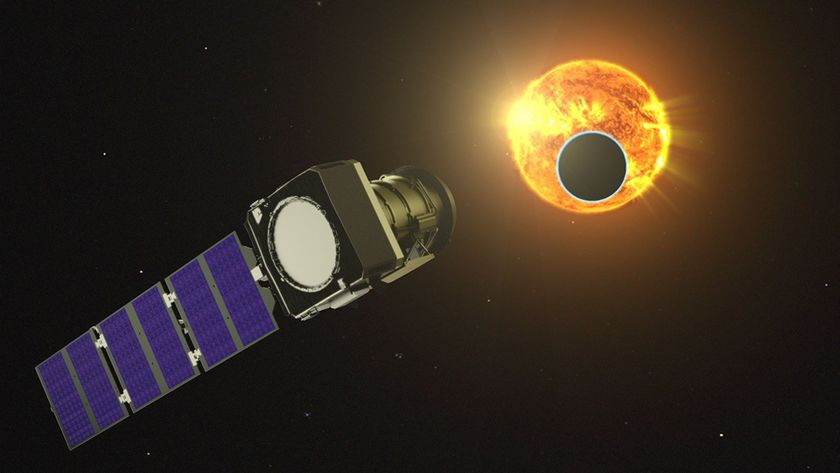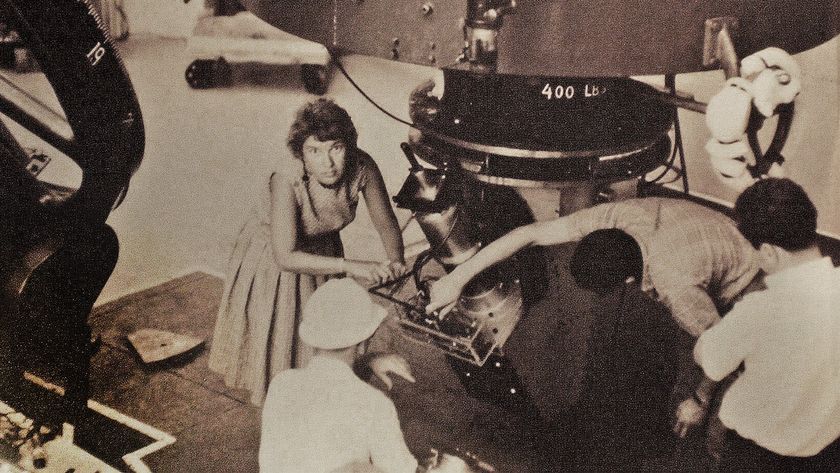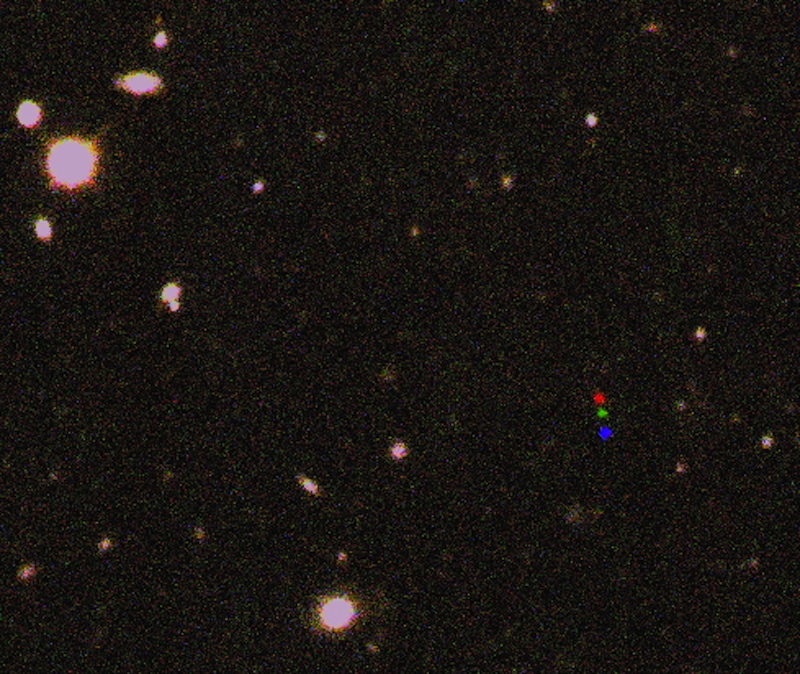
Astronomers have found a new dwarf planet far beyond Pluto's orbit, suggesting that this distant realm contains millions of undiscovered objects — including, perhaps, a world larger than Earth.
The newfound celestial body, called 2012 VP113, joins the dwarf planet Sedna as a confirmed resident of a far-flung and largely unexplored region scientists call the "inner Oort Cloud." Further, 2012 VP113 and Sedna may have been pulled into their long, looping orbits by a big planet lurking unseen in these frigid depths.
"These two objects are just the tip of the iceberg," study co-author Chadwick Trujillo, of the Gemini Observatory in Hawaii, told Space.com. "They exist in a part of the solar system that we used to think was pretty devoid of matter. It just goes to show how little we actually know about the solar system." [New Dwarf Planet Photos: Images of 2012 VP113]
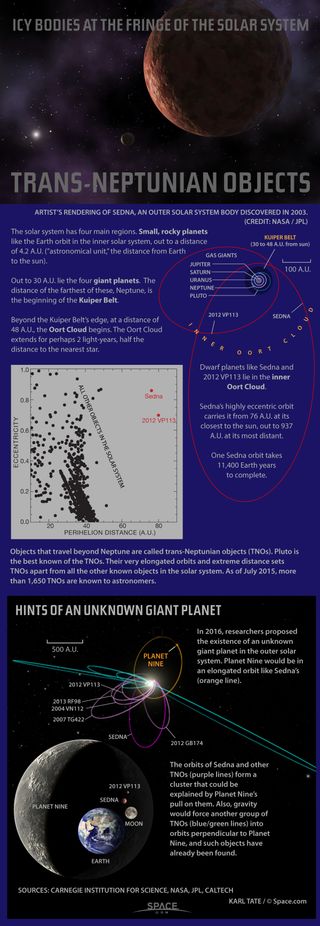
Probing the depths
For several decades, astronomers have divided our solar system into three main parts: an inner zone containing the rocky planets, such as Earth and Mars; a middle realm housing the gas giants Saturn, Jupiter, Uranus and Neptune; and an outer region called the Kuiper Belt, populated by distant and icy worlds like Pluto.

The discovery of Sedna in 2003 hinted that this map is incomplete. Sedna, which is about 620 miles (1,000 kilometers) wide, has an incredibly elliptical orbit, coming no closer to the sun than 76 astronomical units (AU) and going all the way out to 940 AU or so at its most distant point. (One AU, the distance from Earth to the sun, is about 93 million miles, or 150 million km.)
That puts Sedna in the far outer reaches of the solar system. For comparison, Pluto's orbit takes it between 29 and 49 AU from the sun. [Photos of Pluto and Its Moons]
Get the Space.com Newsletter
Breaking space news, the latest updates on rocket launches, skywatching events and more!
And now astronomers know Sedna is not alone out there. Trujillo and Scott Sheppard, of the Carnegie Institution for Science in Washington, D.C., discovered 2012 VP113 using the Dark Energy Camera, which is installed on a 4-meter telescope at the Cerro Tololo Inter-American Observatory in Chile.
Follow-up observations by the 6.5-meter Magellan Telescopes at Las Campanas Observatory, also in Chile, helped Trujillo and Sheppard determine details of 2012 VP113's orbit and learn a bit more about the object.
The body comes no closer to the sun than 80 AU, and it gets as far away as 452 AU. About 280 miles (450 km) wide, 2012 VP113 is large enough to qualify as a dwarf planet if it's composed primarily of ice, researchers said. (By definition, dwarf planets must be big enough for their gravity to mold them into spheres; the mass required for this to happen depends upon the objects' composition.)
The inner Oort Cloud
Objects as distant as Sedna and 2012 VP113 are incredibly difficult to detect; astronomers really only get a chance when the bodies near their closest approach to the sun. [Our Solar System: A Photo Tour of the Planets]
Based on the amount of sky the scientists searched, Trujillo and Sheppard estimate that about 900 bodies larger than Sedna may exist in this faraway realm, which the astronomers dub the inner Oort Cloud. (The true Oort Cloud is an icy shell around the solar system that begins perhaps 5,000 AU from the sun and contains trillions of comets.)
The total population of objects in the inner Oort Cloud, in fact, may exceed that of the Kuiper Belt and the main asteroid belt between Mars and Jupiter, researchers said.
"Some of these inner Oort Cloud objects could rival the size of Mars or even Earth," Sheppard said in a statement. "This is because many of the inner Oort Cloud objects are so distant that even very large ones would be too faint to detect with current technology."
The study was published online today (March 26) in the journal Nature.
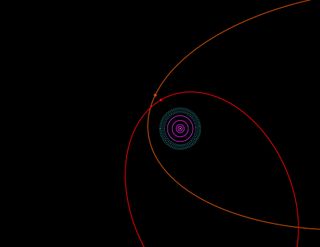
Planet X?
Astronomers don't know much about the origin or evolutionary history of Sedna and 2012 VP113 at this point. The objects may have formed closer to the sun, for example, before getting pushed out by gravitational interactions with other stars — perhaps "sister stars" from the sun's birth cluster, researchers said. Or inner Oort Cloud objects may be alien bodies that the sun plucked from another solar system during a stellar close encounter.
It's also possible that 2012 VP113 and its neighbors were knocked from the Kuiper Belt to the inner Oort Cloud when a big planet was booted outward long ago. This planet may have been ejected from the solar system entirely, or it may still be there in the extreme outer reaches, waiting to be discovered.

Such supposition is far from proof that an undiscovered "Planet X" actually exists, Trujillo stressed. But he did say that the door is open, noting that an Earth-mass body at 250 AU from the sun would likely be undetectable at present.
"It raises the possibility that there could be stuff out there of significant mass, Earth-mass or larger, that we don't know about," he said.
The picture should clear up as more inner Oort Cloud objects are found, allowing astronomers to put more constraints on the origin and orbital evolution of these frigid, distant bodies.
"I think it's a little hard to draw firm conclusions from two objects," Trujillo said. "If we were to have 10 inner Oort Cloud objects, then we could really start saying detailed things about the formation scenarios."
Follow Mike Wall on Twitter @michaeldwall and Google+. Follow us @Spacedotcom, Facebook or Google+. Originally published on Space.com.
Join our Space Forums to keep talking space on the latest missions, night sky and more! And if you have a news tip, correction or comment, let us know at: community@space.com.

Michael Wall is a Senior Space Writer with Space.com and joined the team in 2010. He primarily covers exoplanets, spaceflight and military space, but has been known to dabble in the space art beat. His book about the search for alien life, "Out There," was published on Nov. 13, 2018. Before becoming a science writer, Michael worked as a herpetologist and wildlife biologist. He has a Ph.D. in evolutionary biology from the University of Sydney, Australia, a bachelor's degree from the University of Arizona, and a graduate certificate in science writing from the University of California, Santa Cruz. To find out what his latest project is, you can follow Michael on Twitter.
